Alice Springs Desert Park
ASDP BirdsAustralian Boobook Owl Australian Bustard Australian Hobby Banded Lapwing Barn Owl Black Kite Black-breasted Buzzard Black-faced Woodswallow Black-fronted Dotterel Bourke’s Parrot Brown Falcon Emu Inland Dotterel Orange Chat Pied Honeyeater Princess Parrot Rainbow Bee-eater Red-capped Robin Spinifex Pigeon Splendid Fairy-wren Tawny Frogmouth Wedge-tailed Eagle Western Bowerbird Whistling Kite White-faced Heron White-winged Fairywren
Alice Springs Desert ParkFauna Flora Nature Theatre Nocturnal House
The colourful Rainbow Bee-eater (Merops ornatus) is often referred to as the ‘Rainbow Bird’, a medium size bird that measures up to 27 cm including the tail. The upper part show green forehead, golden crown, green back; turquoise/blue, green and chestnut wings. With plumage that combines pastel tints with bright hues, the Rainbow Bee-eater has a relatively long, slim beak, that has a slight down curve. The tail is black, extending in a pair of long, fine tail streamers with elongated clubbed shaped end. The tail is much shorter and thicker in the female bird and absent in the immature bird.
A common species, the Rainbow Bee-eater are found in open airspace such as over woodland and open forest, semi-arid scrub, grassland, farmland. This provides the space for their aerial acrobatics in pursuit of flying insects such as bees and dragonflies. They can be seen around Alice Springs and Central Australia.
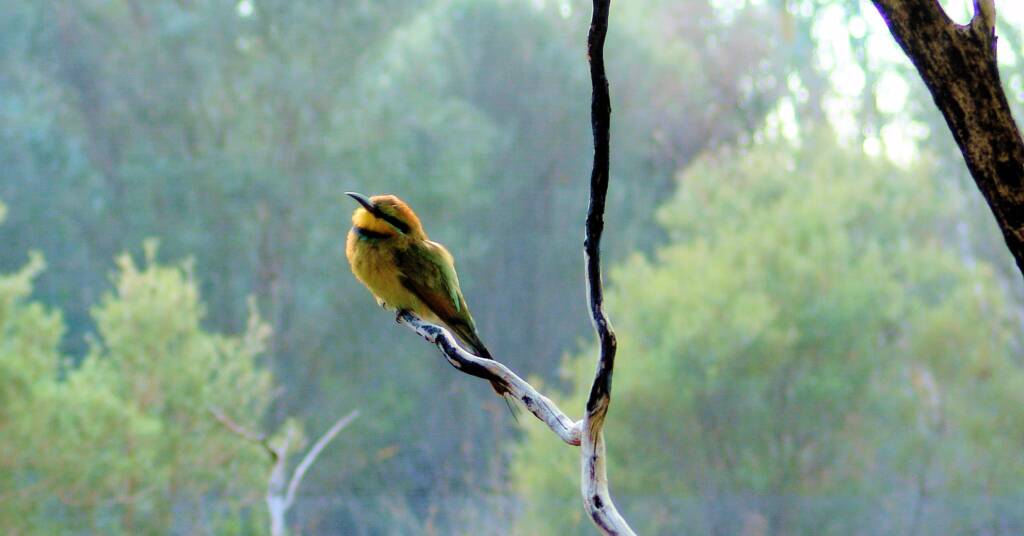

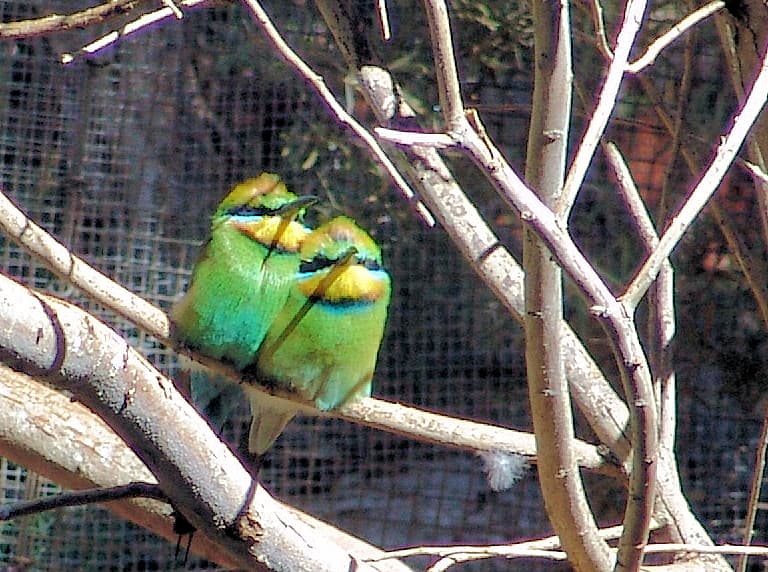
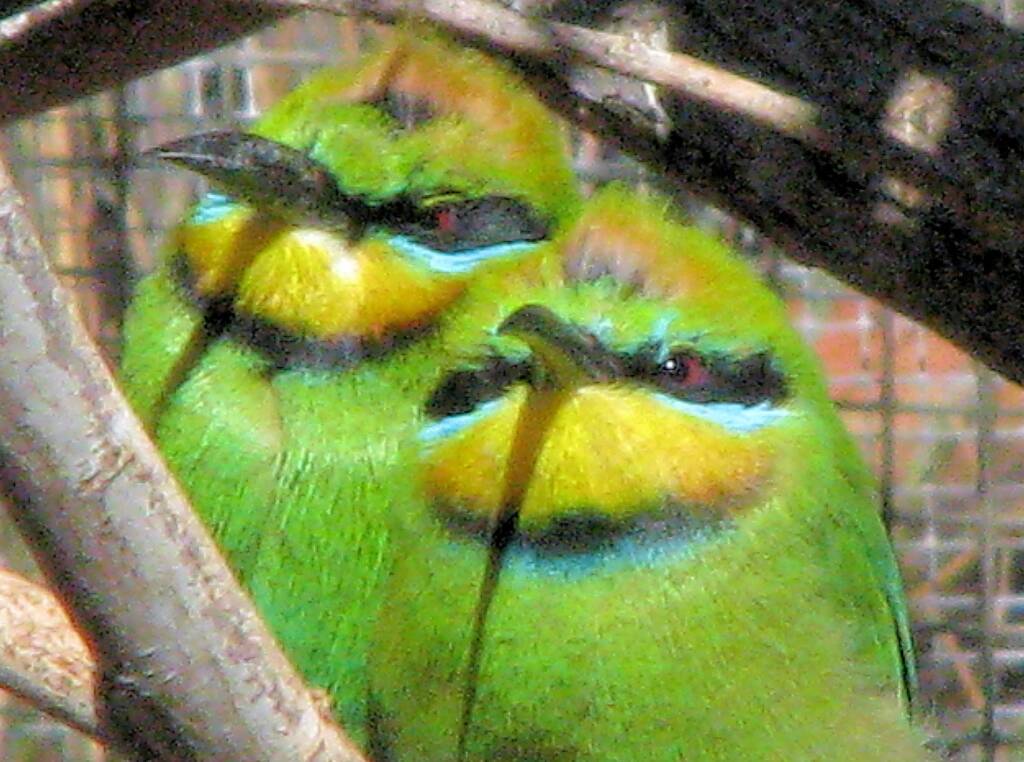

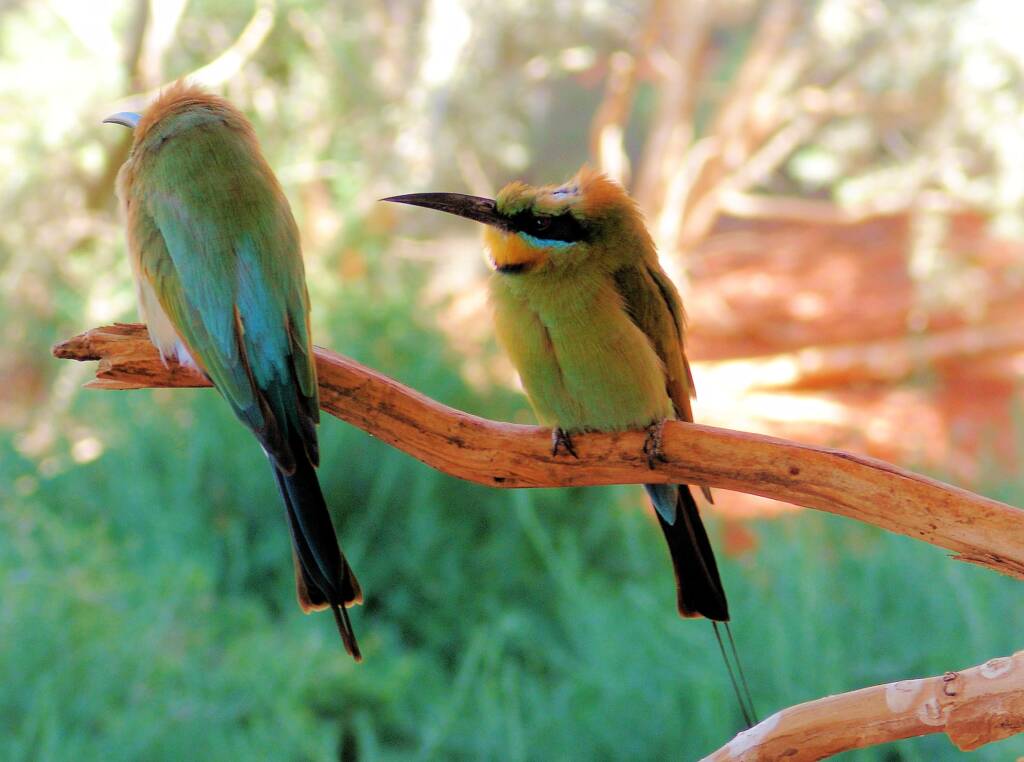
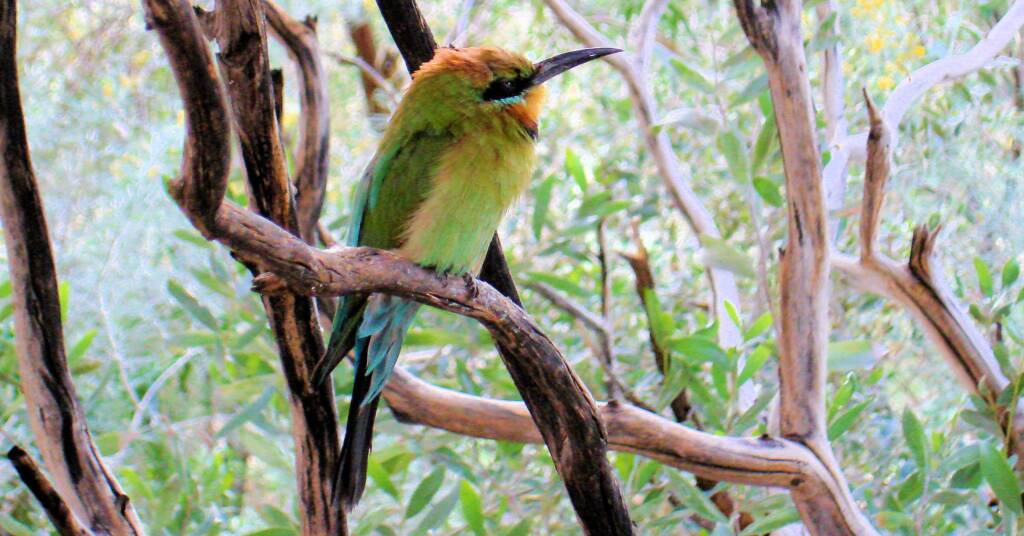

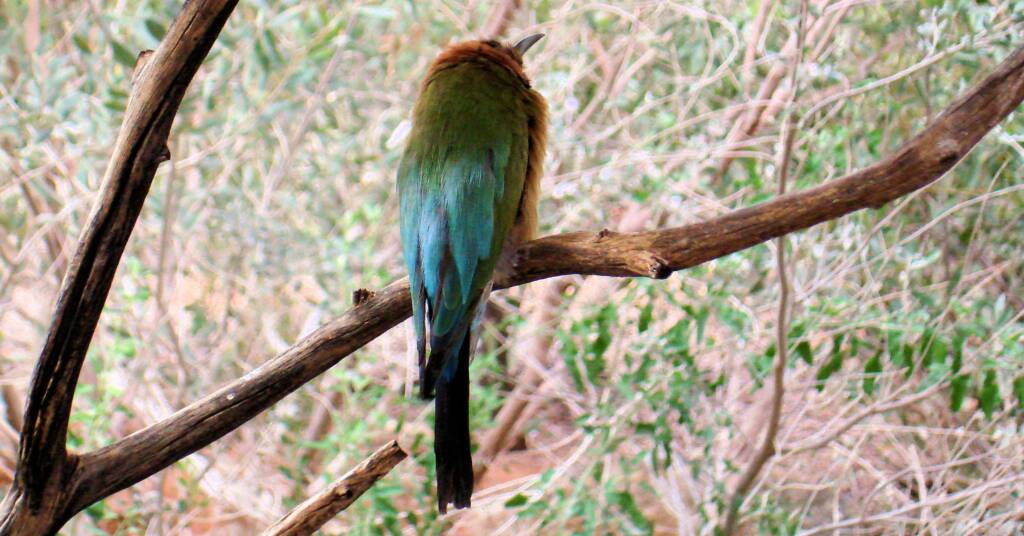

The Rainbow Bee-eaters are social birds that are known to gather in small flocks. When they are not breeding, they like to roost together in groups. They are known to fly north for winter and back south during the summer breeding season (November to January), apart from those that reside in the north. Breeding in the north is usually after the rainy season.
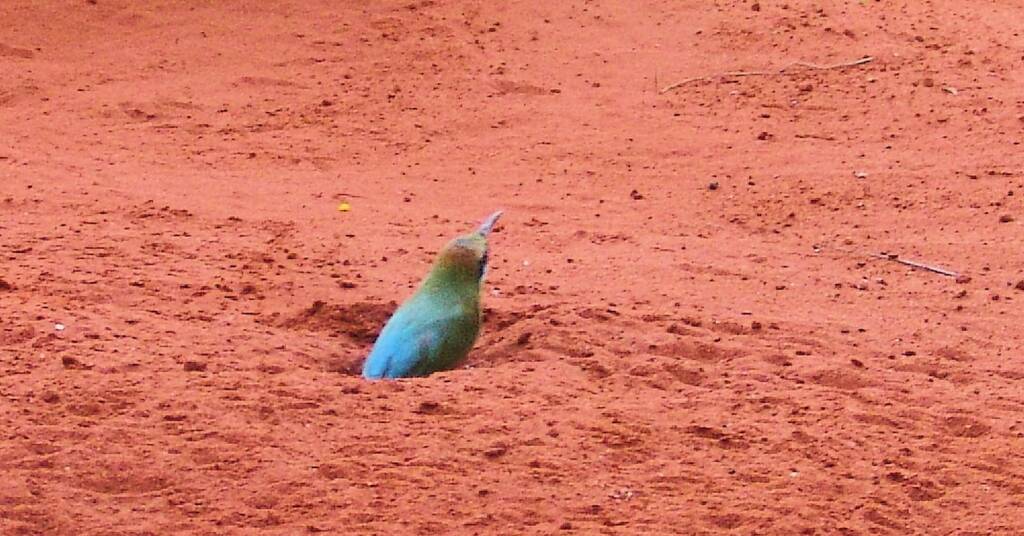
Rainbow Bee-eaters are believed to mate for life. Rainbow bee-eaters are ground nesting birds. They select a suitable nesting site, usually in a sandy bank where they dig a long tunnel, just over 75 cm long, that leads to a nesting chamber. Both parents are known to incubate the eggs and feed the young.
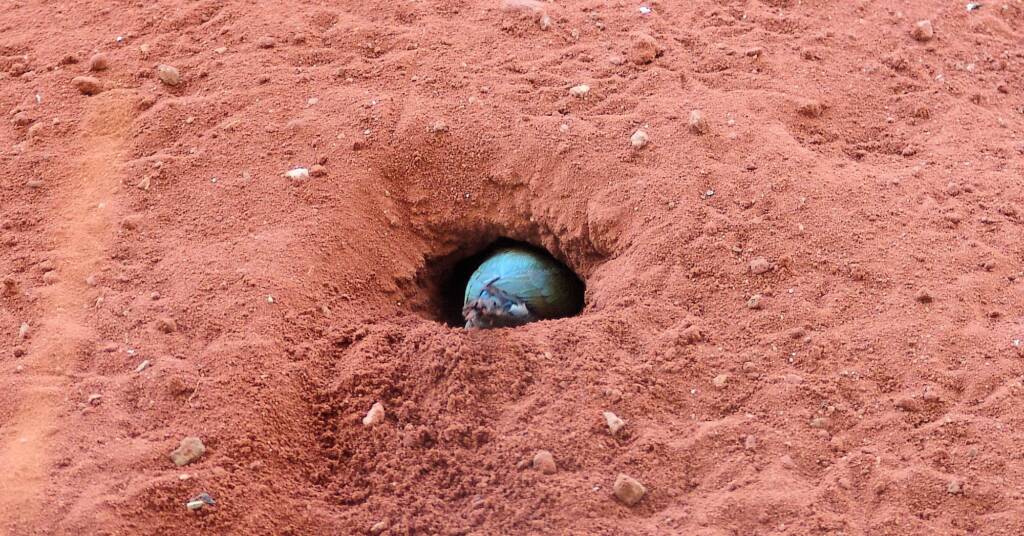


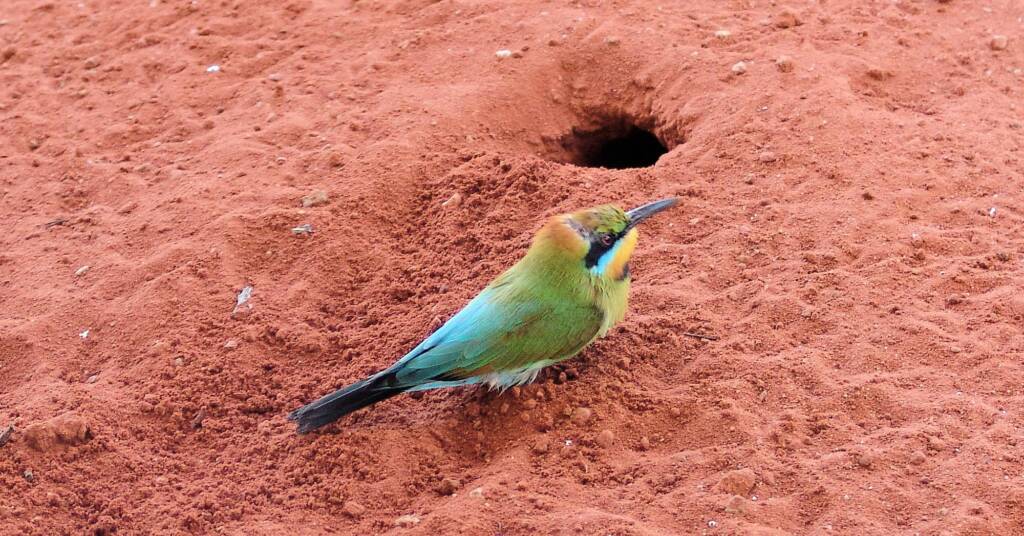

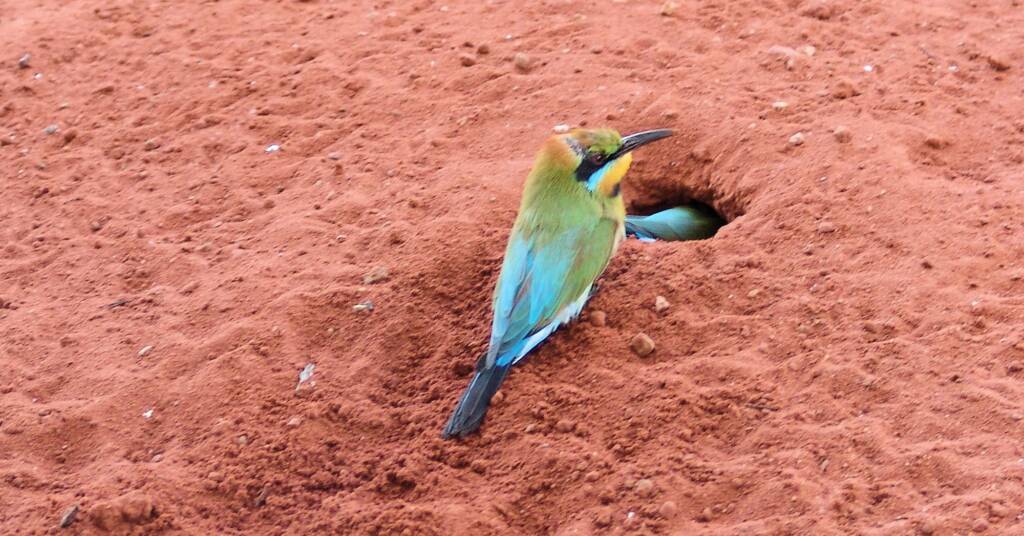

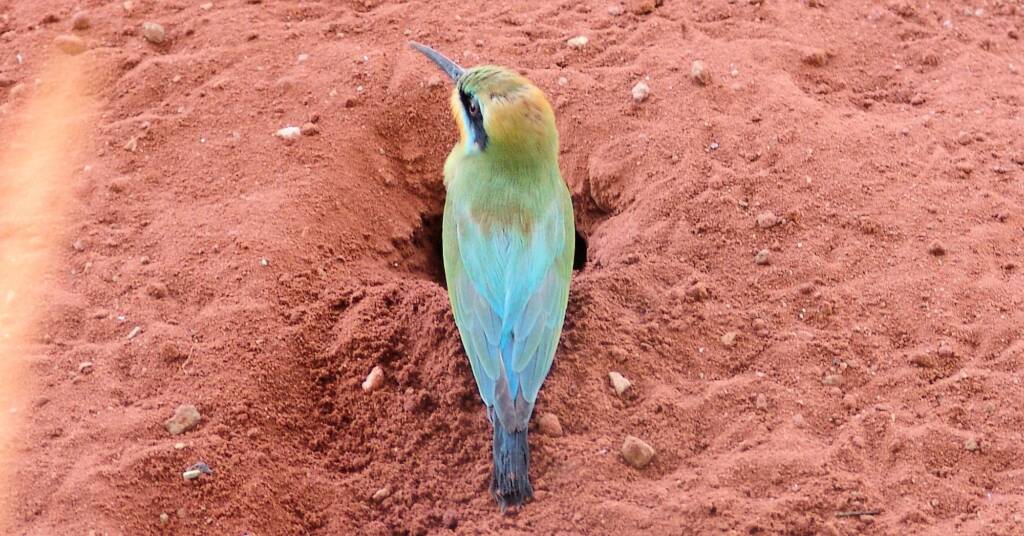
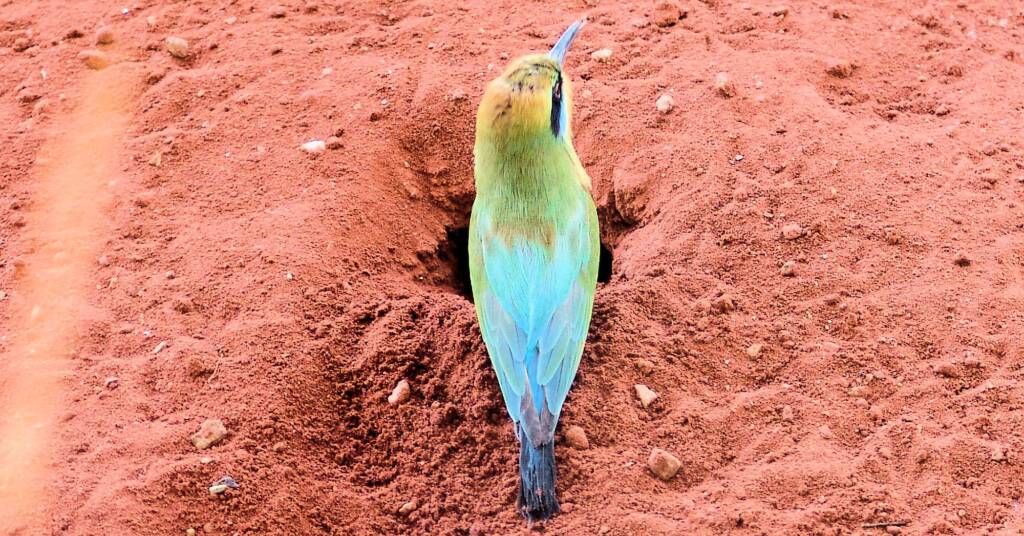
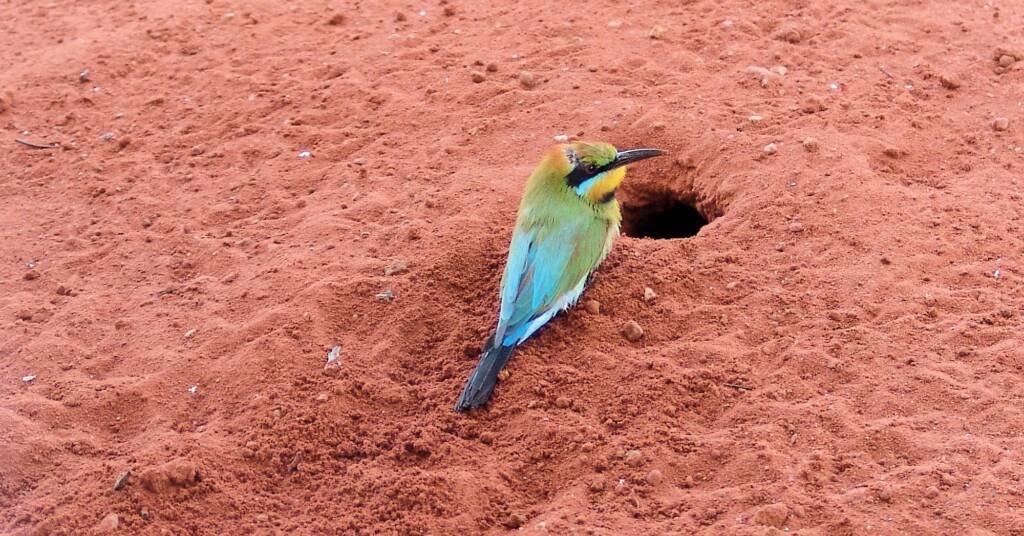
Images © Ausemade PL
- Scientific classification
- Kingdom: Animalia
- Phylum: Chordata
- Class: Aves
- Order: Coraciiformes
- Family: Meropidae
- Genus: Merops
- Species: Merops ornatus
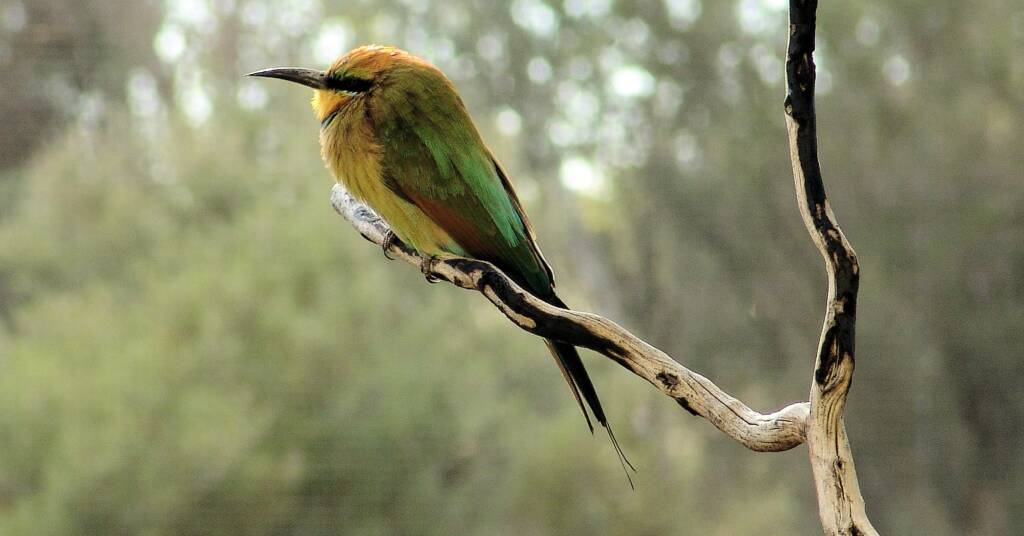
ASDP BirdsAustralian Boobook Owl Australian Bustard Australian Hobby Banded Lapwing Barn Owl Black Kite Black-breasted Buzzard Black-faced Woodswallow Black-fronted Dotterel Bourke’s Parrot Brown Falcon Emu Inland Dotterel Orange Chat Pied Honeyeater Princess Parrot Rainbow Bee-eater Red-capped Robin Spinifex Pigeon Splendid Fairy-wren Tawny Frogmouth Wedge-tailed Eagle Western Bowerbird Whistling Kite White-faced Heron White-winged Fairywren
ASDP FaunaASDP Arachnida ASDP Birds ASDP Insects ASDP Reptiles Dingo Ghost Bat Greater Bilby Numbat Red Kangaroo Short-beaked Echidna Spinifex Hopping Mouse Western Quoll
Alice Springs Desert ParkFauna Flora Nature Theatre Nocturnal House
